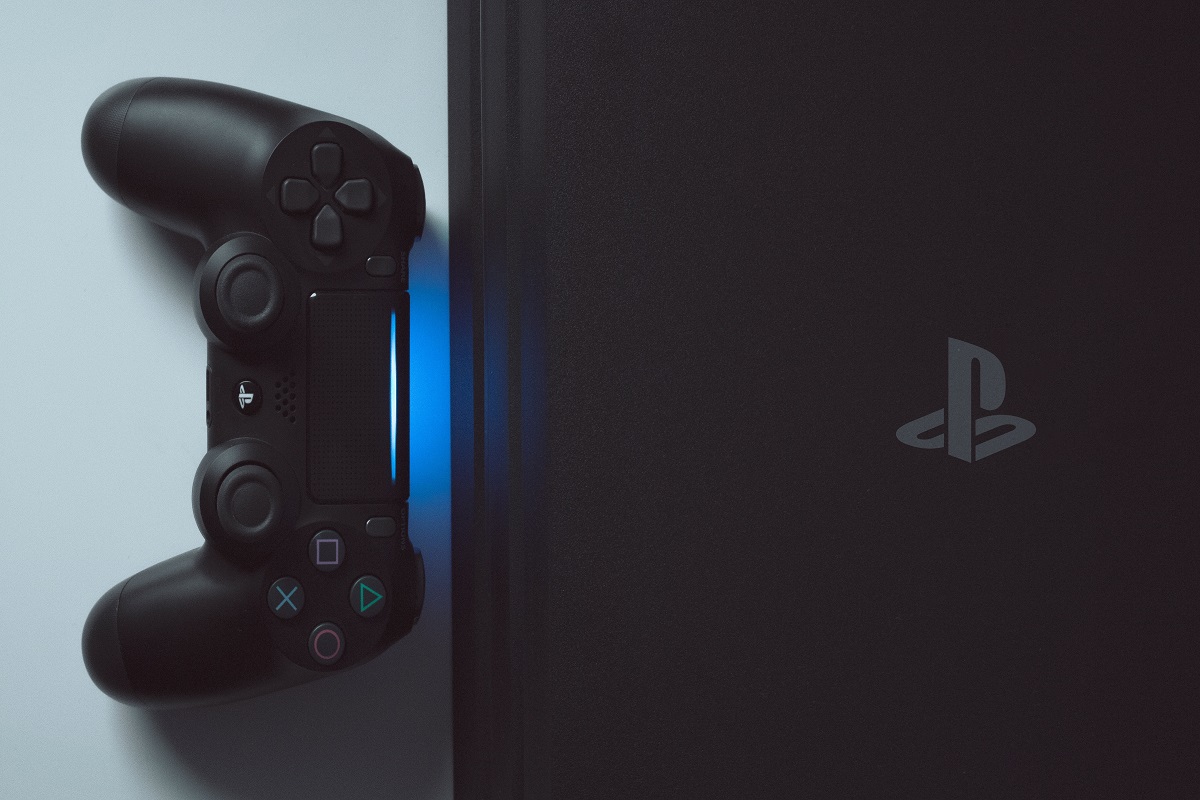If you’re a gamer, you’ve probably heard of the PS3 BIOS firmware.
The PS3 has been around for a while, but it’s still a beloved console among gamers.
One of the most important components of the PS3 is its BIOS.
The PS3 BIOS is a firmware that’s responsible for booting up the console and initializing its hardware components.
The PS3 BIOS is a crucial part of the console, and it’s important to understand how it works.
The BIOS is responsible for initializing the hardware components of the console, such as the CPU, GPU, and RAM.
Without the BIOS, the console wouldn’t be able to boot up or run any games.
The BIOS also provides a layer of security, ensuring that only authorized software can run on the console.
If you’re interested in learning more about the PS3 BIOS, read on.
What Is PS3 BIOS?
If you’re looking to emulate PS3 games on your computer, you may have come across the term “PS3 BIOS.”
But what exactly is it?
In simple terms, BIOS (Basic Input/Output System) is a firmware that is built into the hardware of a device.
It provides the necessary instructions and settings for the device to function properly.
In the case of the PS3, the BIOS is responsible for initializing the hardware components and loading the system software.
The PS3 BIOS is a specific type of BIOS that is designed for the PS3 console.
It is a proprietary firmware that is developed by Sony Computer Entertainment and is not publicly available.
This means that if you want to emulate PS3 games on your computer, you will need to obtain a copy of the PS3 BIOS file.
It is important to note that downloading or using a PS3 BIOS file without owning a PS3 console is illegal and violates Sony’s terms of service.
Additionally, using a PS3 BIOS file that is not specifically designed for your emulator may result in compatibility issues and may even harm your computer.
Therefore, it is recommended that you only use a PS3 BIOS file that is obtained legally and is compatible with your emulator.
In summary, the PS3 BIOS is a firmware that is necessary for the PS3 console to function properly.
If you want to emulate PS3 games on your computer, you will need to obtain a PS3 BIOS file legally and ensure that it is compatible with your emulator.
How To Download PS3 BIOS
If you are planning to use a PS3 emulator, you will need to download the PS3 BIOS.
The BIOS is a set of instructions that the emulator uses to simulate the PS3 hardware and software environment.
Without the BIOS, the emulator will not work. Here’s how you can download the PS3 BIOS:
Find A Reliable Source
There are many websites that claim to offer PS3 BIOS for free download, but most of them are either fake or contain viruses and malware.
Therefore, you should be careful and avoid downloading from untrusted sources.
Look for reputable websites that have a good track record of providing safe and reliable downloads.
Check The Compatibility
Before downloading the PS3 BIOS, you should check the compatibility with your emulator.
Make sure that the BIOS version you are downloading is compatible with your emulator.
Using an incompatible BIOS can cause errors and crashes.
Download The BIOS
Once you have found a reliable source and checked the compatibility, you can download the PS3 BIOS.
The BIOS file will be in a compressed format, such as ZIP or RAR.
You will need to extract the file using a file archiving software like WinRAR or 7-Zip.
Place The BIOS In The Correct Folder
After extracting the BIOS file, you need to place it in the correct folder.
The folder location may vary depending on the emulator you are using.
Check the emulator’s documentation or website for instructions on where to place the BIOS file.
Configure The Emulator
Once you have placed the BIOS file in the correct folder, you need to configure the emulator to use the BIOS.
The process may vary depending on the emulator you are using.
Check the emulator’s documentation or website for instructions on how to configure the BIOS.
By following these steps, you can download the PS3 BIOS and use it with your emulator.
Remember to always use a reliable source and check the compatibility before downloading the BIOS.
Installation Process
Preparation
Before installing the PS3 BIOS, you need to make sure that you have the following:
- A USB flash drive with at least 512MB of free space
- The latest version of the PS3 BIOS file
- A computer with internet access
- A PS3 console
Make sure that your USB flash drive is formatted to FAT32.
If it is not, you can easily format it by right-clicking on the drive and selecting “Format”.
Installation Steps
Once you have everything you need, follow these steps to install the PS3 BIOS:
- Download the latest version of the PS3 BIOS file from a reputable website.
- Extract the BIOS file from the downloaded archive.
- Copy the extracted BIOS file to the root directory of your USB flash drive.
- Insert the USB flash drive into the PS3 console.
- Turn on the PS3 console and navigate to the Settings menu.
- Select “System Update” and then select “Update via Storage Media”.
- Follow the on-screen instructions to update the PS3 BIOS.
Note that the installation process may take several minutes to complete.
Once the installation is finished, your PS3 console should restart automatically.
In summary, installing the PS3 BIOS is a straightforward process that requires a USB flash drive, the latest BIOS file, and a PS3 console.
By following the steps outlined above, you should be able to update your PS3 BIOS in no time.
Common Issues And Solutions
If you are having issues with your PS3 BIOS, you are not alone.
Here are some common issues and solutions to help you get your PS3 BIOS up and running.
Compatibility Issues
One of the most common issues with PS3 BIOS is compatibility issues.
If you are trying to run a PS3 BIOS on a system that is not compatible, you may experience issues such as error messages or crashes.
To avoid compatibility issues, make sure you have the correct version of the PS3 BIOS for your system.
You can check the compatibility of your system by checking the manufacturer’s website or contacting their support team.
Installation Errors
Another common issue with PS3 BIOS is installation errors.
If you are experiencing installation errors, it could be due to a number of reasons, including corrupted files or incorrect installation procedures.
To avoid installation errors, make sure you download the PS3 BIOS from a reputable source and follow the installation instructions carefully.
You may also want to try installing the PS3 BIOS on a different system to see if the issue persists.
If you are still experiencing issues with your PS3 BIOS, you may want to consult with a professional or contact the manufacturer’s support team for further assistance.
Safety Measures
When dealing with PS3 BIOS, it is important to take certain safety measures to prevent any damage to your system.
Here are a few things to keep in mind:
Back Up Your Data
Before making any changes to your PS3 BIOS, it is recommended that you back up all of your data.
This will ensure that you don’t lose any important files or data in case something goes wrong during the update process.
Use Official BIOS Updates
Make sure that you only use official BIOS updates provided by Sony.
Using unofficial BIOS updates can potentially damage your system and void your warranty.
Follow Instructions Carefully
When updating your PS3 BIOS, it is important to carefully follow the instructions provided by Sony.
Skipping steps or making mistakes during the update process can cause irreversible damage to your system.
Use A Stable Power Source
Make sure that your PS3 is connected to a stable power source during the update process.
Power outages or interruptions can cause the update process to fail and potentially damage your system.
Avoid Interrupting The Update Process
Once you start the update process, it is important to let it run its course without interruption.
Interrupting the update process can cause irreversible damage to your system.
By following these safety measures, you can ensure that your PS3 BIOS update process goes smoothly and without any issues.
Key Takeaways
If you are interested in emulating PS3 games, there are a few key takeaways to keep in mind:
- RPCS3 is the recommended emulator.
- RPCS3 is the most popular emulator for PS3 games.
- It is free, open-source, and actively developed, making it the best choice for most users.
- You need a PS3 BIOS file.
- In order to use RPCS3, you will need a PS3 BIOS file.
- This is a firmware file that is required for the emulator to function properly.
- Your PC needs to meet certain requirements.
- To run RPCS3, your PC needs to meet certain requirements.
- You will need a modern CPU with at least 4 cores and a dedicated GPU with Vulkan compatibility.
- For the best performance, an 8-core/16-thread 35W+ H-series CPU such as an Intel Core i7-10870H or an AMD Ryzen 7 5800H is recommended.
- You will need PS3 games in ISO or PKG format.
- In order to play PS3 games on RPCS3, you will need to have the games in ISO or PKG format.
- These files can be downloaded from various sources online.
- You can configure and patch games in RPCS3.
- RPCS3 allows you to configure and patch games to improve performance and fix issues.
- This can be done through the emulator’s settings and options menus.
- EmuDeck can simplify the process.
- EmuDeck is a tool that can simplify the process of installing and configuring RPCS3 on your PC.
- It can also help you add your PS3 games to Steam Deck Game Mode for easy access.
By keeping these key takeaways in mind, you can get started with emulating PS3 games on your PC with RPCS3.








